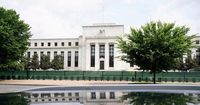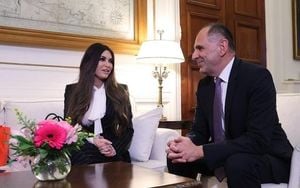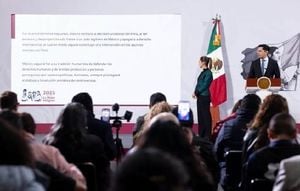The global financial world is watching closely this week as the U.S. Federal Reserve and the Swiss National Bank (SNB) take center stage, with their decisions and statements rippling through currency markets and raising questions about the politicization of central banking tools. On September 24, 2025, the USD/CHF currency pair—tracking the value of the U.S. dollar against the Swiss franc—remained steady around 0.7920 in late Asian trading, a reflection of both calm markets and mounting anticipation ahead of key policy announcements.
According to FXStreet, the relative calm in the USD/CHF pair comes after a series of significant statements from top Federal Reserve officials. Most notably, Fed Chair Jerome Powell signaled caution on reducing interest rates further, citing a delicate balance of risks. "Near-term risks to inflation are tilted to the upside and risks to employment to the downside," Powell said during a press conference on September 23. His remarks underscored the Fed’s careful approach, suggesting that any move to loosen monetary policy would be measured and data-driven.
Yet not all voices at the Fed are singing from the same hymn sheet. Fed Governor Michelle Bowman expressed a different sense of urgency regarding rate cuts, pointing to signs of labor market weakness. "It’s a lot easier to support the labor market by lowering the federal funds rate than it is to fix it after it’s broken," she stated, highlighting a growing debate within the central bank about the right path forward.
Investors are now turning their attention to the upcoming release of U.S. Durable Goods Orders data for August, scheduled for Thursday, September 25. Analysts expect a moderate decline of 0.5%, a figure that could influence how policymakers and markets interpret the strength of the U.S. economy.
Meanwhile, across the Atlantic, the Swiss National Bank is also preparing to announce its latest policy decision. Market consensus, according to FXStreet, is that the SNB will hold interest rates steady at zero, a position supported by Switzerland’s persistently low inflation. Investors and analysts alike are eager for any hints from SNB officials about the possibility of pushing rates into negative territory, a move that could have far-reaching consequences for savers and pension funds. In the second week of September, SNB Chairman Martin Schlegel cautioned that negative interest rates could have "undesirable side effects for savers and pension funds," a sentiment that has added another layer of uncertainty to the central bank’s deliberations.
While interest rates and inflation dominate headlines, another, less visible but equally crucial tool in the central bankers’ arsenal has come under renewed scrutiny: dollar swap lines. As Reuters reported on September 24, the debate around the politicization of the Federal Reserve is not limited to its interest rate decisions. Dollar swap lines—pipelines of dollar liquidity that the Fed opens to other central banks in times of crisis—are attracting attention for their potential to become instruments of political influence as much as financial stability.
Historically, these swap lines have played a vital role in maintaining global financial stability during periods of market stress, such as the 2008 financial crisis and the COVID-19 pandemic in 2020. The Fed currently maintains standing dollar swap lines with five major central banks: the European Central Bank, Bank of Japan, Bank of England, Swiss National Bank, and Bank of Canada. Temporary swap lines with nine other countries, including Brazil, Australia, and Mexico, were retired after the crises passed.
But as the world’s reliance on the dollar persists, questions are mounting about how political considerations might shape the Fed’s willingness to extend swap lines in the future—especially under a Trump-influenced Fed. Recent developments involving South Korea and Argentina have brought these issues into sharp focus.
South Korea, for instance, reached a preliminary trade deal with the United States in July 2025, but has hesitated to sign it due to the foreign exchange implications of a massive $350 billion investment package. On September 23, Bank of Korea board member Hwang Kun-il told Reuters, "My personal opinion is that the FX swap is a high-level political matter, not an economic one." This sentiment was echoed by South Korea’s President Lee Jae Myung, who warned that the country’s economy could face a crisis rivaling its 1997 meltdown if it accepted Washington’s demands without adequate safeguards, such as a currency swap agreement.
Meanwhile, Argentina is once again in the throes of a severe confidence crisis. On September 22, U.S. Treasury official Scott Bessent told reporters that "all options, including a currency swap line, are on the table to stabilize Argentina’s markets." Bessent emphasized that U.S. support for Argentina’s right-wing President Javier Milei—who is seen as a close ally of former President Trump—would be "large and forceful." The contrasting approaches to South Korea and Argentina have raised eyebrows among analysts and policymakers alike, highlighting the increasingly political nature of decisions surrounding dollar swap lines.
This is not just an issue for emerging markets. The Bank of England and European Central Bank have reportedly asked lenders to assess their dollar needs in times of stress and to consider what they would do if they could not rely on the Fed backstop. It’s a scenario that would have seemed almost unthinkable just a few years ago, but one that is now being taken seriously in boardrooms across Europe.
According to Reuters, only the Federal Open Market Committee or Congress can make changes to FX swap lines, which are managed by the New York Fed. "The executive branch has no direct authority to make any changes," Bank of America analysts noted, but they added that pressure from the administration—often from Trump himself—is intensifying. The White House has demanded lower interest rates, attempted to remove Fed Governor Lisa Cook, and installed current adviser Stephen Miran onto the Fed board. Deutsche Bank analysts wrote that the administration could exert influence over the Fed’s swap line decisions "via moral suasion as well as the appointment of the Fed governing board."
Research by John Michael Cassetta, published in 2022 by the Kennedy Business School, supports the notion that political alignment with the U.S. has historically influenced which countries receive swap lines and their priority. "The empirical evidence suggests that, controlling for other potential factors, political alignment with the U.S. played a role in determining a country’s likelihood of receiving a swap line and where it placed in the hierarchy," Cassetta argued.
As the U.S. Dollar Index (DXY) hovered stably around 97.35 on September 24, 2025, and central banks prepared for their next moves, the world was reminded of the complex interplay between economics and politics at the heart of modern central banking. The outcomes of this week’s decisions—and the debates swirling around them—will be closely watched not just by traders and investors, but by governments and citizens whose fortunes are tied to the ebb and flow of global finance.
With central banks treading carefully and political winds blowing strong, the next chapter in global monetary policy promises to be anything but dull.




